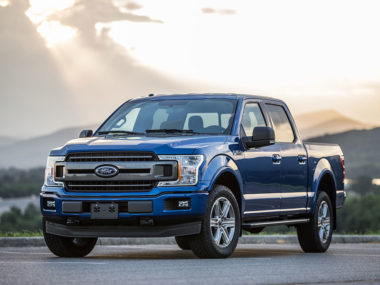A minimum wage is the lowest hourly rate an employer can pay its employees according to federal or state law. In the U.S., minimum wage laws are set at a federal level, but may also be amended at a state level. This allows states to take into consideration the cost of living and other factors to ensure the minimum wage allows for fair wealth distribution.
Throughout the years, the country has experienced several changes to minimum wage legislation as economic factors, such as the cost of living, inflation, and taxes, have also changed. For example, legislation passed in 1949 raised the federal minimum wage rate from 40 cents per hour to 75 cents per hour for all workers. As of 2020, the U.S. national minimum wage rate is set at $7.25 per hour. However, the government assesses this rate annually and it may increase as officials see fit.
States and cities that set their own minimum wage rates must ensure employers pay at least $7.25 per hour but may increase this rate based on local factors. The purpose of this law is to ensure workers earning minimum wage can live independently and comfortably as they work full time. Review the following information to learn about U.S. states and cities with the highest minimum wage rates and why these wages are increasing.
Table of Contents
U.S. States With the Highest Minimum Wage
State governments have the authority to set their minimum wage higher than the federal rate. They may make these changes as they see fit based on inflation, local expenses, and the cost of living in the state. Therefore, some states have higher minimum wage rates than others. The following 10 states with the highest minimum wages are listed based on 2020 wages that are paid per hour.
- Washington: Washington state minimum wage is $13.50.
- California: The California state minimum wage is $13.
- Massachusetts: The Massachusetts minimum wage is set at $12.75.
- Oregon: Oregon’s minimum wage is $11.25.
- New York: New York state minimum wage is set at $11.80.
- Arizona: The Arizona minimum wage is $12.
- Maine: Maine’s minimum wage is currently $12.
- Vermont: The Vermont minimum wage is $10.96.
- Rhode Island: Rhode Island minimum wage is set at $10.50.
- Connecticut: Connecticut has a minimum wage set at $11.
U.S. Cities With the Highest Minimum Wage
The U.S. federal government also allows city governments to set their own minimum wages. Since the cost of living may be higher in certain locations and areas, some cities find it beneficial to set a minimum wage for local employers that’s higher than the federal or state wage. These cities increase wages in an effort to ensure minimum wage employees can afford basic necessities, including cars, homes, and food.
For the following five cities with the highest minimum wage rates, the 2020 wages listed are paid per hour.
- Seattle, WA: The minimum wage in Seattle for employers with 501 or more employees is $16.39. Employers with less than 500 employees that pay at least $2.25 per hour in medical benefits or that allow employees to earn at least $2.25 per hour in tips must pay a $13.50 minimum wage. A small company that doesn’t contribute to medical benefits or allow for tips must pay at least $15.75.
- San Francisco, CA: The San Francisco minimum wage is set at $15.59 but some government supported employees may only earn a minimum wage of $13.27.
- New York City, NY: The New York City minimum wage is set at $15 for all employers.
- Washington, D.C.: The current Washington, D.C. minimum wage is $15 and may be increased incrementally each year.
- Chicago, IL: The Chicago minimum wage for non-tipped employees is $13 while the wage for tipped employees is $5.95.
U.S. Companies With the Highest Minimum Wage
Employers aren’t legally bound to raise minimum wages within their organizations. To operate within the law, they simply must comply with the federal, state, and city government minimum wages.
However, some companies pay minimum wages that are higher than what the legislation implies. For the 10 companies listed below with the highest minimum wages for employees, the 2020 wages are listed in hourly increments.
- Target: Currently, Target has a starting wage of $13 but hopes to increase this to $15 by the end of 2020.
- Bank of America: Bank of America pays a $20 minimum wage, which was recently increased from $17 at the beginning of 2020.
- JP Morgan Chase: The JP Morgan Chase minimum wage for most employees is $16.50 but may be $18 for workers who live in cities with high costs of living, such as New York City.
- Huntington National Bank: The current starting wage at Huntington Bank is $16.
- Facebook: The Facebook minimum wage depends on employee type and location. Contractors in costly locations, such as San Francisco, are paid a $20 minimum wage while Seattle workers earn a minimum of $18. Full-time employees living in cities with high costs of living earn $22 and Seattle employees earn $20. Full-time employees in all other locations are paid a minimum wage of $18.
- Wells Fargo: The Wells Fargo minimum wage was recently raised from $15 to $20 for employees in most locations. Employees in all locations will be paid at least this minimum wage by the end of 2020.
- Amazon: Amazon’s minimum wage is currently set at $15 for employees company-wide.
- Costco: The minimum wage for Costco employees throughout the U.S. is $15.50.
- Charter Communications/Spectrum: Charter Communications/Spectrum pays a minimum wage of $15 to all employees, which includes target commissions.
- Ben & Jerry’s: Using annual cost of living calculations in Vermont, Ben & Jerry’s set its minimum wage at $16.92 in 2015 and has remained firm at this starting hourly pay.
The Truth About High Minimum Wages
States, cities, and companies do what they can to ensure the minimum wage is reasonable and that full-time workers are earning living wages. While government officials and employers attempt to set starting salaries high enough that full-time workers can afford basic necessities, sometimes even the highest minimum wages simply aren’t enough to combat high costs of living.
For example, San Francisco’s cost of living is considerably higher than it is throughout the rest of the nation. Employees who earn the city’s minimum wage of $15.59 may still find it hard to afford housing, food, clothing, and other basic necessities without government assistance, another job, or a side gig as an additional source of income.
While the city government and individual companies may be sympathetic to this predicament, they may not believe they can safely raise the minimum wage while staying in business. If the minimum wage was raised, companies could go out of business, causing unemployment rates to rise and minimum wage workers to be left without jobs or pay.
While the national minimum wage is set at $7.25 per hour, many states and cities may set higher wages, depending on inflation and the costs of living in their specific locations. Some companies have even set their starting hourly wages much higher than what legislation demands in an effort to ensure employees can live independently and comfortably. While these minimum wages are set to ensure financial stability for workers, they may not address the true living wages that are needed to cover basic necessities in certain locations.
Image Source: https://depositphotos.com/





